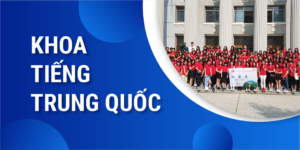- Câu hỏi 113859:
Read the text and choose the best answer.
The first two decades of this century were dominated by the microbe hunters. These hunters had tracked down one after another of the microbes responsible for the most dreaded scourges of many centuries: tuberculosis, cholera, diphtheria. But there remained some terrible diseases for which no microbe could be incriminated: scurvy, pellagra, rickets, beriberi. Then it was discovered that these diseases were caused by the lack of vitamins, a trace substance in the diet. The diseases could be prevented or cured by consuming foods that contained the vitamins. And so in the decades of the 1920's and 1930's, nutrition became a science and the vitamin hunters replaced the microbe hunters.
In the 1940's and 1950's, biochemists strived to learn why each of the vitamins was essential for health. They discovered that key enzymes in metabolism depend on one or another of the vitamins as coenzymes to perform the chemistry that provides cells with energy for growth and function. Now, these enzyme hunters occupied center stage.
How do vitamins influence health?
- Câu hỏi 113863:
Read the text and Decide that the following statements are TRUE (T), FALSE (F) or NOT GIVEN (NG).
Almost everyone with or without a computer is aware of the latest technological revolution destined to change forever the way in which humans communicate, namely, the Information Superhighway, best exemplified by the ubiquitous Internet. Already, millions of people around the world are linked by computer simply by having a modem and an address on the 'Net', in much the same way that owning a telephone links us to almost anyone who pays a phone bill. In fact, since the computer connections are made via the phone line, the Internet can be envisaged as a network of visual telephone links. It remains to be seen in which direction the Information Superhighway is headed, but many believe it is the educational hope of the future.
Using the Internet costs the owner of a telephone extra money.
- Câu hỏi 113865:
Read the article and choose the correct answer, A, B, C or D.
Bramley College now has full electronic information resources in the College Library to help you in your studies. On CD-ROM in the library we have about fifty databases, including many statistical sources. Want to know the average rainfall in Tokyo or the biggest export earner of Vanuatu? It's easy to find out. Whether you are in the School of Business or the School of Art Design, it's all here for you.
You can conduct your own CD-ROM search for no charge, and you can print out your results on the library printers using your library photocopying card. Alternatively, you can download your results to disk, again for no charge, but bring your own formatted floppy disk or CD-ROM. If you are not sure how to conduct a search for yourself, library staff can do it for you, but we charge $20 for this service, no matter how long or how short a time it takes.
All library workstations have broadband access to the Internet, so you can find the web-based information you need quickly and easily. If you are unfamiliar with using the Internet, help is available in several ways. You can start with the online tutorial Netstart; just click on the Netstart icon the Main Menu. The tutorial will take you through the basic steps to using the Internet, any time convenient to you. If you prefer, ask one of the librarians for internet advice (best at quiet times between 9.00am and 11.30 am weekdays) or attend one of the introductory group sessions that are held in the first two weeks of each term. Sign your name on the list on the library Bulletin Board to guarantee a place, as they are very popular.
A word of warning: demand for access to library workstations is very high, so you are strongly advised to book a workstation, and we have to limit your use to a maximum of one hour at any one time. Make your booking (for which you will receive a receipt) at the Information Desk at the enquiry desks in the Media Services Area (Level 1). Also, use of the computers is limited to Bramley students only, so you may be asked to produce your Student Identification Card to make a booking, or while using the workstations.
If library staff search for information on CD-ROM, students pay
- Câu hỏi 113868:
Read the article and choose the correct answer, A, B, C or D.
According to airline industry statistics, almost 90 percent of airline accidents are survivable or partially survivable. But passengers can increase their chances of survival by learning and following certain tips. Experts say that you should read and listen to safety instructions before takeoff and ask questions if you have uncertainties. You should fasten your seat-belt low on your hips and as tightly as possible. Of course, you should also know how the release mechanism of your belt operates. During takeoffs and landings, you are advised to keep your feet flat on the floor. Before takeoff you should locate the nearest exit and an alterative exit and count the rows of seats between you and the exits so that you can find them in the dark if necessary.
In the event that you are forewarned of a possible accident, you should put your hands on your ankles and keep your head down until the plane comes to a complete stop. If smoke is present in the cabin, you should keep your head low and cover your face with napkins, towels, or clothing. If possible, wet these for added protection against smoke inhalation. To evacuate as quickly as possible, follow crew commands and do not take personal belongings with you. Do not jump on escape slides before they are fully inflated, and when you jump, do so with your arms and legs extended in front of you. When you get to the ground, you should move away from the plane as quickly as possible, and never smoke near the wreckage.
It can be inferred from the passage that people are more likely to survive fires in aircrafts if they…
- Câu hỏi 113873:
Read the text and choose the best answer.
One of the most renowned Spanish architects of all time was Antoni Gaudi. Gaudi's emergence as one of 's preeminent artists at the end of the nineteenth century marked a milestone in the art world.
Gaudi's popularity helped to bring about the acceptance and rebirth of the Catalan language, which had been banned during the literature and art. Gaudi shares his Catalonian background with two other famous Spanish artists, Pablo Picasso and Miro. The diverse ethnic background of the region greatly influenced the work of Picasso and Miro, as well as Gaudi. Thus, their works were a combination of an old history and an active, vivid imaginary world. This has sometimes been referred to as the “Catalan Mind.” Yet it was perhaps Gaudi who had the greatest talent for bringing together diverse groups, ones which others viewed as being too diametrically opposed to be capable of coming together and co-existing amicably.
This was apparent not only in the artists and other individuals who surrounded him, but also in the varied styles and techniques he employed in his architecture. Much of his work can be seen in , where his structures are known as a fine representation of modernism. He also used a great variety of color in his buildings, and this art nouveau is often associated with his own unique style of design. All of these factors are what helped put him at the forefront of art movements to come: his unique ability to take on and transform traditional Spanish elements with the emerging diverse ethnic groups, merging these with his own fertile imagination, and consequently turning these forces into some of the greatest architecture the world has ever seen.
Gaudi’s first language was....
- Câu hỏi 113875:
Read the text and choose the best answer.
Western people rely on technical and mechanical solutions in everything they do. Refrigerators preserve their food, washing machines clean their underwear and computers are supposed to solve all their problems. When they are ill, they rely on the surgeon’s knife. If their hearts are running down, then they must be repaired, if they cannot be repaired, they should be replaced, just as an old car sometimes gets a new engine. But up to now we have had a shortage of donors to give their hearts, to keep one person alive, another donor had to die.
Nowadays there is more and more talk about using monkeys. Every monkey has a near-human heart, and humans have always been over careful in respecting the lives and well-being of other animals. This includes the life and well-being of other humans. Therefore, in the early years of the 22nd century - It was told the mass killings of monkeys may occur. We’ll need to use their hearts for human consumption.
Monkeys, on the whole, are happier creatures than their near relatives, Homo sapiens, or man. They know fear, of course, and they face real dangers, but they are also more intelligent than us. They create no unnecessary dangers for themselves, they run no businesses, chase no money, are unimpressed by gold – that utterly useless metal, and they do not care at all about hell or evil spirits. I have a vague feeling that it is not monkeys’ hearts that we ought to implant in ourselves, but monkeys’ brains.
The author says that monkeys….
- Câu hỏi 113877:
Read the text and answer the question.
When was the last time you saw a frog? Chances are, if you live in a city, you have not seen one for some time. Even in wet areas once teeming with frogs and toads, it is becoming less and less easy to find those slimy, hopping and sometimes poisonous members of the animal kingdom. All over the world, even in remote jungles on the far side of the globe, frogs are losing the ecological battle for survival, and biologists are at a loss to explain their demise. Are amphibians simply over-sensitive to changes in the ecosystem? Could their rapid decline in numbers be signalling some coming environmental disaster for us all?
To what does the pronoun one in the passage refer?
- Câu hỏi 113884:
Read the text and answer the question.
People appear to be born to compute. The numerical skills of children develop so early and so inexorably that it is easy to imagine an internal clock of mathematical maturity guiding their growth. Not long after learning to walk and talk, they can set the table with impressive accuracy — one plate, oneknife, one spoon, one fork, for each of the five chairs. Soon they are capable of noting that theyhave placed five knives, spoons, and forks on the table and, a bit later, that this amounts to fifteen pieces of silverware. Having thus mastered addition, they move on to subtraction. It seems almost reasonable to expect that if a child were secluded on a desert island at birth and retrieved seven years later, he or she could enter a second-grade mathematics class without any serious problems of intellectual adjustment.
Of course, the truth is not so simple. This century, the work of cognitive psychologists has illuminated the subtle forms of daily learning on which intellectual progress depends. Children were observed as they slowly grasped — or, as the case might be, bumped into — concepts that adults take for granted, as they refused, for instance, to concede that quantity is unchanged as water pours from a short stout glass into a tall thin one. Psychologists have since demonstrated that young children, asked to count the pencils in a pile, readily report the number of blue or red pencils, but must be coaxed into finding the total. Such studies have suggested that the rudiments of mathematics are mastered gradually, and with effort. They have also suggested that the very concept of abstract numbers — the idea of a oneness, a twoness, a threeness that applies to any class of objects and is a prerequisite for doing anything more mathematically demanding than setting a table — is itself far from innate.
With which of the following statements would the author be LEAST likely to agree?
- Câu hỏi 113885:
Read the text and choose the best answer.
One of the most renowned Spanish architects of all time was Antoni Gaudi. Gaudi's emergence as one of 's preeminent artists at the end of the nineteenth century marked a milestone in the art world.
Gaudi's popularity helped to bring about the acceptance and rebirth of the Catalan language, which had been banned during the literature and art. Gaudi shares his Catalonian background with two other famous Spanish artists, Pablo Picasso and Miro. The diverse ethnic background of the region greatly influenced the work of Picasso and Miro, as well as Gaudi. Thus, their works were a combination of an old history and an active, vivid imaginary world. This has sometimes been referred to as the “Catalan Mind.” Yet it was perhaps Gaudi who had the greatest talent for bringing together diverse groups, ones which others viewed as being too diametrically opposed to be capable of coming together and co-existing amicably.
This was apparent not only in the artists and other individuals who surrounded him, but also in the varied styles and techniques he employed in his architecture. Much of his work can be seen in , where his structures are known as a fine representation of modernism. He also used a great variety of color in his buildings, and this art nouveau is often associated with his own unique style of design. All of these factors are what helped put him at the forefront of art movements to come: his unique ability to take on and transform traditional Spanish elements with the emerging diverse ethnic groups, merging these with his own fertile imagination, and consequently turning these forces into some of the greatest architecture the world has ever seen.
His art nouveau is often related to
- Câu hỏi 113886:
Read the text and choose the best answer.
Western people rely on technical and mechanical solutions in everything they do. Refrigerators preserve their food, washing machines clean their underwear and computers are supposed to solve all their problems. When they are ill, they rely on the surgeon’s knife. If their hearts are running down, then they must be repaired, if they cannot be repaired, they should be replaced, just as an old car sometimes gets a new engine. But up to now we have had a shortage of donors to give their hearts, to keep one person alive, another donor had to die.
Nowadays there is more and more talk about using monkeys. Every monkey has a near-human heart, and humans have always been over careful in respecting the lives and well-being of other animals. This includes the life and well-being of other humans. Therefore, in the early years of the 22nd century - It was told the mass killings of monkeys may occur. We’ll need to use their hearts for human consumption.
Monkeys, on the whole, are happier creatures than their near relatives, Homo sapiens, or man. They know fear, of course, and they face real dangers, but they are also more intelligent than us. They create no unnecessary dangers for themselves, they run no businesses, chase no money, are unimpressed by gold – that utterly useless metal, and they do not care at all about hell or evil spirits. I have a vague feeling that it is not monkeys’ hearts that we ought to implant in ourselves, but monkeys’ brains.
According to the author, westerners believe heath problems can be solved by…

















